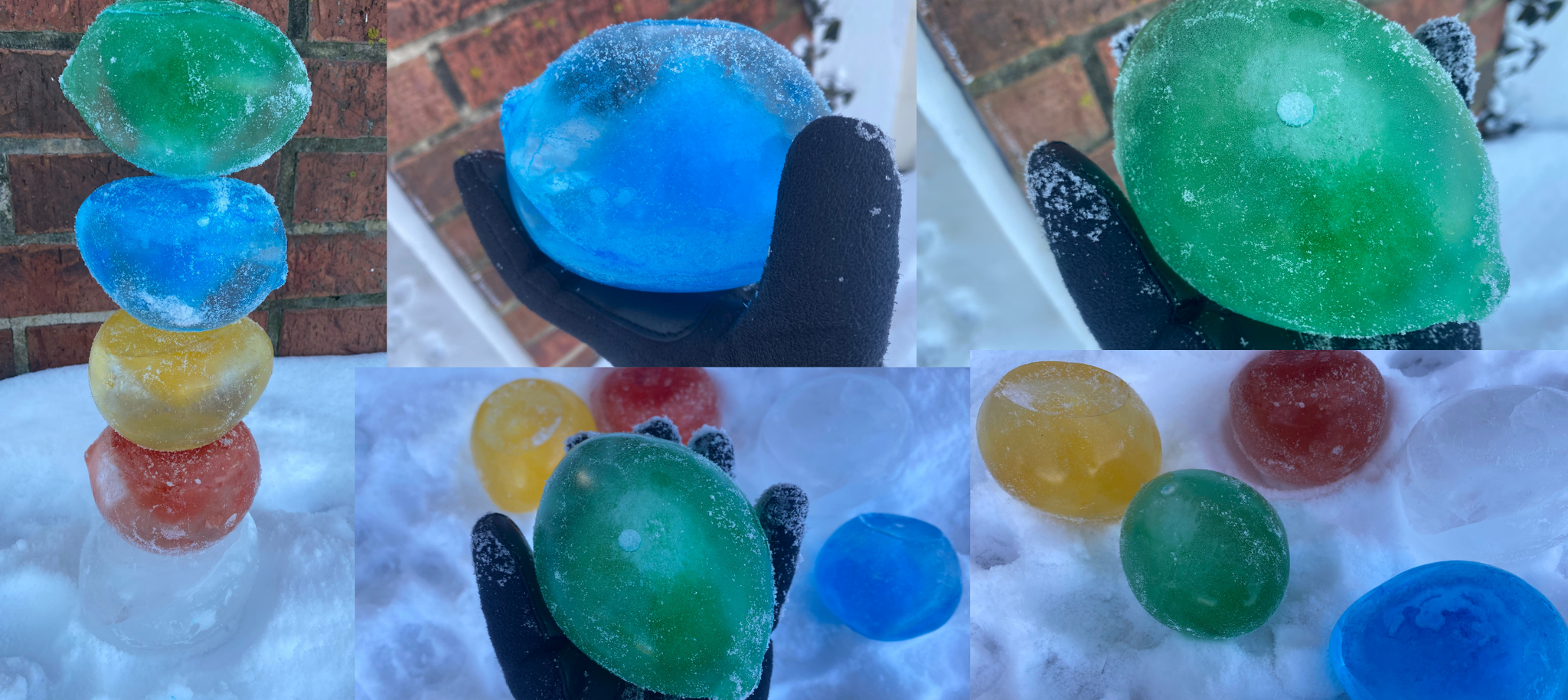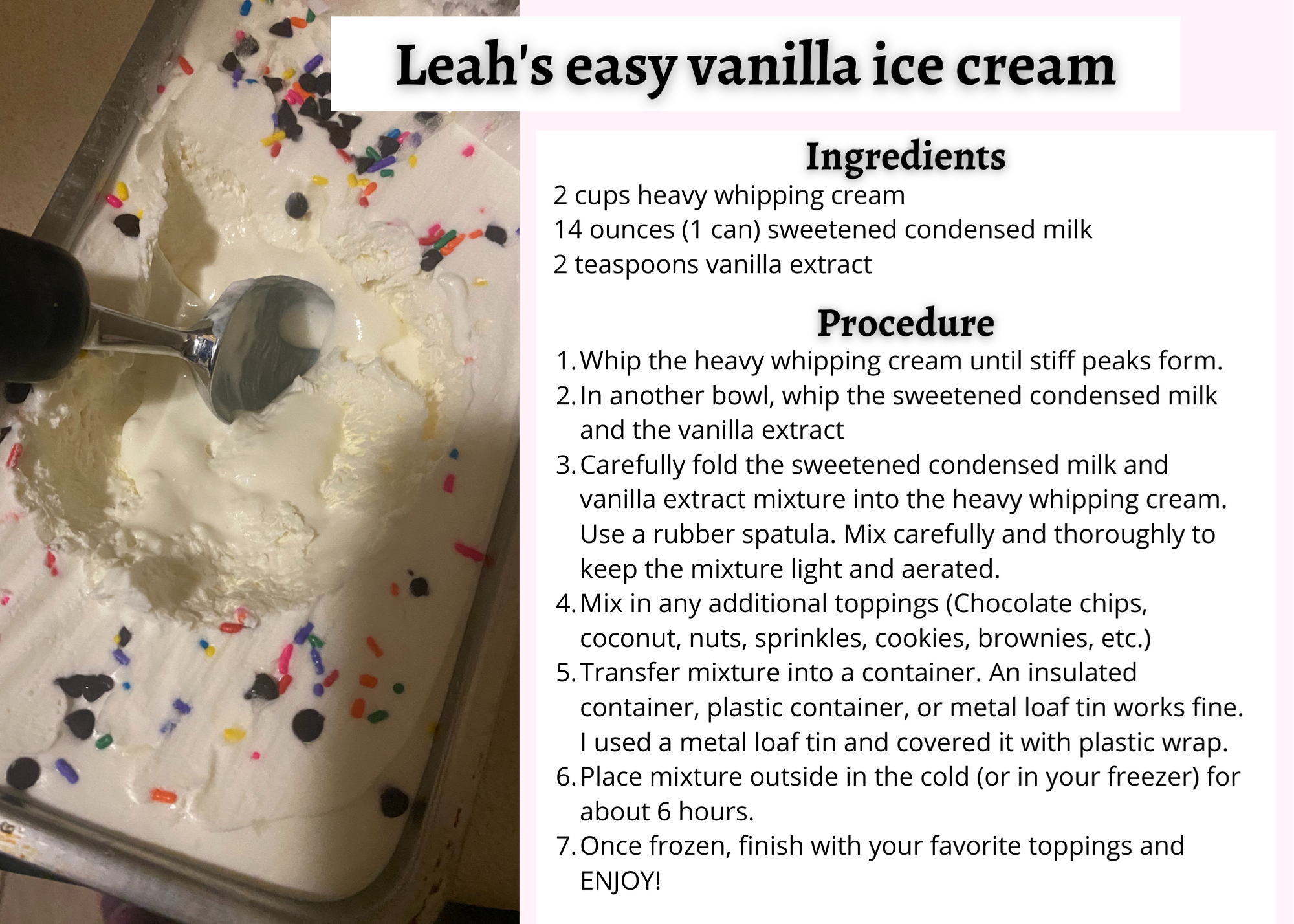Don't go outside! But do try this...
As much as I hate being cold, I have been geeking out this week performing all the fun experiments that require bitter cold temperatures.
Fun fact - we have been below freezing now since February 8th. By the time this cold air outbreak is over, we will have had at least a 10 day stretch with temperatures below freezing. Not to mention, these wind chills of 20 or 25 below zero.
If you do want to venture out into the snow, here are a couple of activities that won’t cause you to freeze in the process. Each activity can be completed with only spending a maximum of five minutes outside.
Making a cloud!
Parents, do this experiment for your kids because boiling water is required and if not thrown far enough, or thrown in the wrong direction, it could cause burns. It’s easy, boil a pot of water. Stand upwind and throw the water in front of you. Never throw the water into the wind. The water will instantly evaporate into vapor and form a cloud.
The water won’t freeze because temperatures are just not cold enough. Boiling water creates a more impressive effect than room temperature. Boiling water evaporates much quicker than room temperature water, creating an impressive cloud of steam.
Why does this happen? Boiling water is experiencing a phase change. Water has three phases, solid, liquid, and gas. When the water is boiling it is near the phase change from liquid to gas. When we throw the boiling water it accelerates the phase change into water vapor, making the spectacular "cloud."
Snow to Liquid Ratio
Colder air produces lots of powdery snow because it cannot hold as much water as warmer air. So the colder the temperatures, the more light and powdery the snow will be. If temperatures are closer to freezing and more moisture is available, you will get wet and heavier snow. Wet snow is much better for building snowmen. Wet snow also tends to produce slicker road conditions because of the higher water content.
When we talk about the snow to liquid ratio, we’re talking about the amount of water needed to produce a certain amount of snow. For example, the most common snow to liquid ratio is 10 to 1, where 10 inches of snow is equivalent to 1 inch of liquid water.
It's a very good thing it doesn't take much water to create high snow totals. Five inches of snow is great to play in; however, five inches of rain would cause major flooding in our area.
The ratio is not always 10 to 1. Drier air produces more powdery snow. We could have a snow to liquid ratio of 12 to 1 or higher.
There is a simple way to calculate the ratio. All you need is a narrow tin, such as a pringles tin, a ruler, and of course snow.
- After the snow has fallen, find an area representative of the snowfall amount. The best spot would be away from buildings and snowdrifts.
- Drop the can into the snow, with the open end facing down. Pick the can up with the snow in it and measure the snow depth with your ruler.
- Bring your can inside and allow the snow to melt. Do not heat the can, as this will cause some of the water to evaporate.
- Calculate the ratio of the depth of snow to the depth of water.
- Calculate the ratio at several other locations and for other snowstorms. How does the ratio change? What does this tell you about the water content in the atmosphere?
Ice marbles

This is a fun activity for the kids. Easy peasy! Just need balloons (any type will work) and food coloring. Put a few drops of food coloring in the balloon, fill it with water, and leave outside to freeze. Depending on the temperature and how much you fill the balloon, it’ll change the freezing time. I would recommend 12 to 24 hours just to be safe. When the water is frozen use scissors to carefully cut off the balloon. You’ll be left with a beautiful “marble” that you can roll into snowdrifts. Caution: Food coloring in the marble will get on your hands after removing the balloon.
Snow Ice Cream
There are multiple ways to do this one. I made real ice cream and froze it outside (recipe below). As a kid, I used to eat snow with maple syrup drizzled over the top.

If you want ice cream made with actual snow, click HERE. It took about four hours for the ice cream to freeze when temperatures were 4°F outside.
If the snow has ANY discoloration, DON’T EAT IT! I’d recommend putting a bowl outside on an elevated surface and catching the snow that way.
Porch activities- Other things to try
These next few activities you can watch from your warm home. They can be performed on your porch, and you can observe through the glass door or window.
Freezing clothes - Soak shirts, pants, dresses, etc. in water and hang them outside. Time how long it takes until they freeze. In these temperatures, it usually takes about 20 minutes. See if you can get the clothing to stand up on their own.
Freezing ramen noodles - Cook up the ramen according to package instructions. Make sure the noodles are steaming hot. Scoop up a good forkful of noodles and suspend the fork between two objects, like glasses, and time how long it takes for the boiling hot ramen to freeze. When you remove the glass, the fork and noodles will look like they are levitating in the air. Once it defrosts you can eat the ramen.
Levitating egg - You’ll need something to suspend the egg between, such as bread. Crack the egg on the ground and let the yolk come out just a little bit. Balance the egg on whatever you choose to help suspend it. Time how long it takes the egg to freeze. When you remove the supports, you will have a suspending egg.

0 Comments Add a Comment?